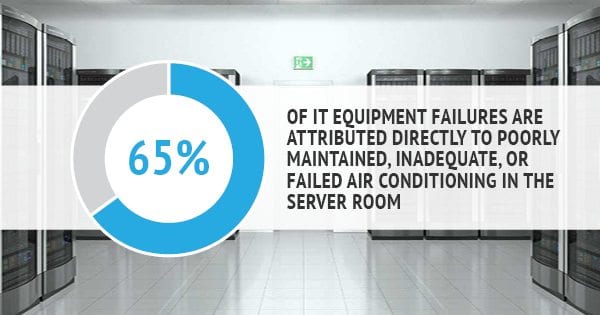 Data center operations can be complicated. They contain so much technological equipment that must be maintained for the center to function properly. Certain equipment can easily become overheated and stop working, especially when there is so much of it in such a tightly confined space. In fact, more than 65% of IT equipment failures are attributed directly to poorly maintained, inadequate, or failed air conditioning in the server room. One aspect that many people overlook while organizing data center operations are the difference between hot and cold aisle containment solutions. They both involve air flow and re-circulation, but offer different features. Cold aisle containment solutions can be cheaper and more efficient if they are designed properly. Here is some basic information regarding cold aisle containment options.
Data center operations can be complicated. They contain so much technological equipment that must be maintained for the center to function properly. Certain equipment can easily become overheated and stop working, especially when there is so much of it in such a tightly confined space. In fact, more than 65% of IT equipment failures are attributed directly to poorly maintained, inadequate, or failed air conditioning in the server room. One aspect that many people overlook while organizing data center operations are the difference between hot and cold aisle containment solutions. They both involve air flow and re-circulation, but offer different features. Cold aisle containment solutions can be cheaper and more efficient if they are designed properly. Here is some basic information regarding cold aisle containment options.
Cold aisle containment is a strategy that involves isolating the cold aisles within the data center. The cold air from these aisles is contained and eliminates hot and cold air mixing. This allows exhaust-producing equipment to be kept at the right temperatures to stabilize and optimize performance. The physical barrier at the ends and top of the aisles are often transparent in order to work with room lighting and stay visible for monitoring.
The major advantage of cold aisle containment is that it is considered more efficient because it offers a greater ability to monitor supply air to match the exhaust and temperature needs of the equipment. The cold air is also forced to go through the electronic equipment. As opposed to hot aisle containment, there will be cold air which bypasses the electronics and circulates back to the air handling equipment without being properly utilized.
The other benefits of cold aisle containment are better overall air flow and efficiency. However, there are also few minor disadvantages. There is a possibility of discharge overheating the rest of the data center, creating comfort issues for other tenants. It may also cause operational issues, but only for pieces of equipment that aren’t contained. Overall, the risk of encountering one of these disadvantages is almost negligible when the system is installed and continues to be maintained correctly.
When it comes to data centers, functionality is a top priority. Before you make any final decisions regarding your data center’s air flow, do your research, and don’t hesitate to reach out to a professional if you have any questions.
